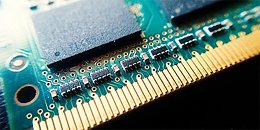Raevenlord
News Editor
- Joined
- Aug 12, 2016
- Messages
- 3,755 (1.20/day)
- Location
- Portugal
| System Name | The Ryzening |
|---|---|
| Processor | AMD Ryzen 9 5900X |
| Motherboard | MSI X570 MAG TOMAHAWK |
| Cooling | Lian Li Galahad 360mm AIO |
| Memory | 32 GB G.Skill Trident Z F4-3733 (4x 8 GB) |
| Video Card(s) | Gigabyte RTX 3070 Ti |
| Storage | Boot: Transcend MTE220S 2TB, Kintson A2000 1TB, Seagate Firewolf Pro 14 TB |
| Display(s) | Acer Nitro VG270UP (1440p 144 Hz IPS) |
| Case | Lian Li O11DX Dynamic White |
| Audio Device(s) | iFi Audio Zen DAC |
| Power Supply | Seasonic Focus+ 750 W |
| Mouse | Cooler Master Masterkeys Lite L |
| Keyboard | Cooler Master Masterkeys Lite L |
| Software | Windows 10 x64 |
PC hardware enthusiasts all over (but particularly in our own forums) have been adamant in how this is one of the worst times to be building a new system. And it's true; the DIY market is a mess right now, as our own btarunr mentioned in his latest editorial; so much so, that in a full reversal of years and years of experience, users might now actually be better served in the $/performance department by buying their systems from boutique retailers, than by acquiring all of the parts separately. It's a mad, mad world out there, for a multitude of reasons; but one such reason is DRAM pricing. And fortunately, it seems that China's National Development and Reform Commission (NDRC) is on the verge of signing a Memorandum Of Understanding (MOU) with Samsung that might help the DRAM market as a whole.

As reported by DRAMeXchange, a division of TrendForce, rising prices in the DRAM market prompted the NDRC to approach Samsung, which led to the MOU, which is believed to include details of further cooperation in semiconductor industry, such as expanding investment in China and technical collaboration. With China's position as the world's largest importer of DRAM, it's understandable why Samsung wouldn't want to antagonize the country too much, and would be willing to cede some ground. As a result of the MOU, and according to Avril Wu, research director of DRAMeXchange, two key potentiators of DRAM pricing may be affected: constrained, limited price growth in the face of expected, continued tight supply; and partly as a result, increased focus from manufacturers towards increasing production capacity, and thus supply, in order to compensate for the slower increase in revenue from more controlled price increases.
Very, very interestingly (readers will give this their own amount of relevance, naturally), this news comes some weeks after it was outed by media outlets that the same NDRC could be looking into DRAM and NAND price-fixing efforts from manufacturers. Coincidence?
View at TechPowerUp Main Site

As reported by DRAMeXchange, a division of TrendForce, rising prices in the DRAM market prompted the NDRC to approach Samsung, which led to the MOU, which is believed to include details of further cooperation in semiconductor industry, such as expanding investment in China and technical collaboration. With China's position as the world's largest importer of DRAM, it's understandable why Samsung wouldn't want to antagonize the country too much, and would be willing to cede some ground. As a result of the MOU, and according to Avril Wu, research director of DRAMeXchange, two key potentiators of DRAM pricing may be affected: constrained, limited price growth in the face of expected, continued tight supply; and partly as a result, increased focus from manufacturers towards increasing production capacity, and thus supply, in order to compensate for the slower increase in revenue from more controlled price increases.
Very, very interestingly (readers will give this their own amount of relevance, naturally), this news comes some weeks after it was outed by media outlets that the same NDRC could be looking into DRAM and NAND price-fixing efforts from manufacturers. Coincidence?
View at TechPowerUp Main Site





